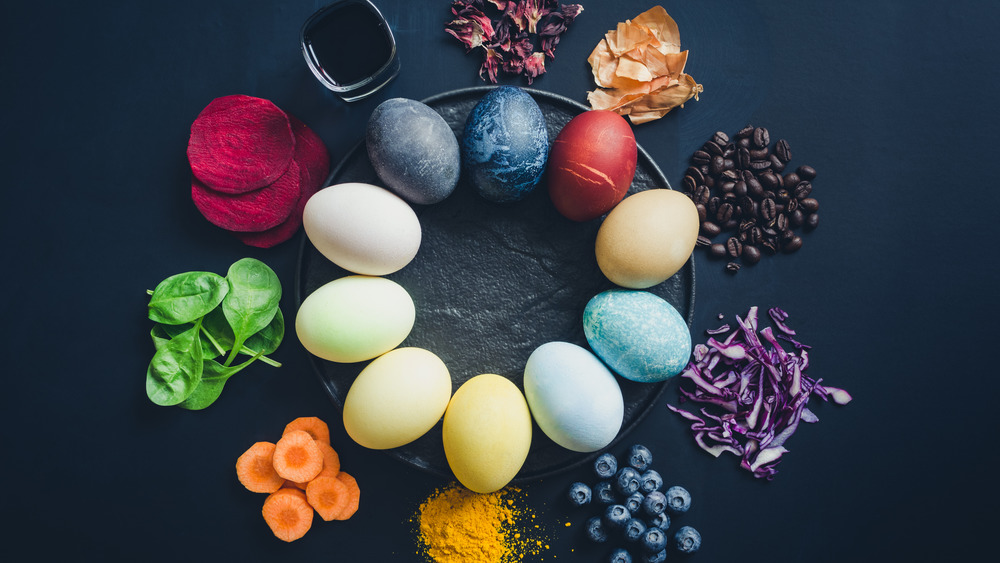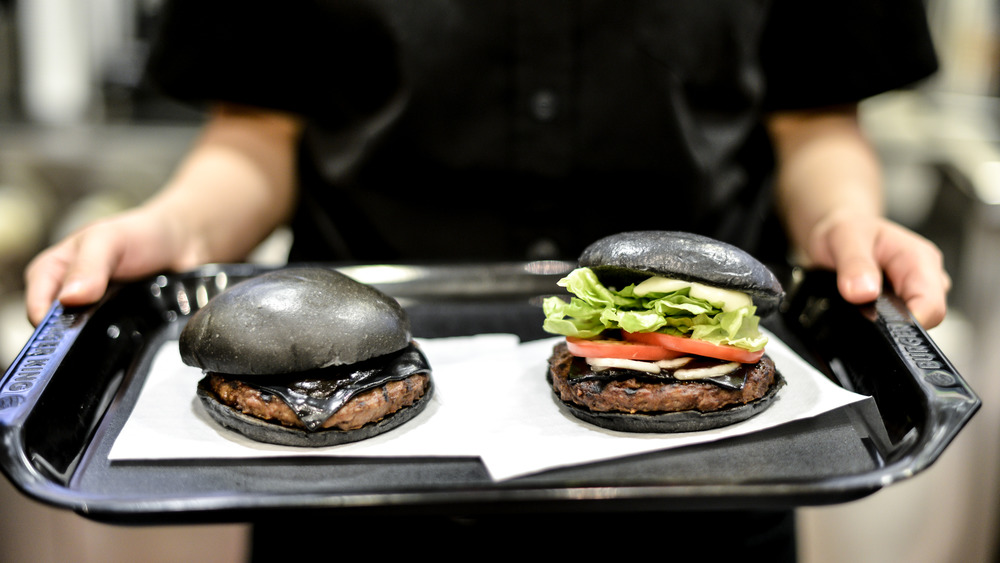The Strange Way Food Coloring Affects Flavor
Anyone who has watched recent seasons of The Great British Baking Show – or any tv cooking competition, really – has been conditioned to think that food must look good as well as taste good. Generally, this seems to mean clean-cut minimalism in the dish's presentation, but studies have repeatedly shown that the color of a food helps determine the way we taste it.
In a 2007 study reported by Science Daily, researchers from the University of British Columbia and the University of Florida discovered that they could alter their subjects' preferred orange juice by altering its tint: "Our consumers succumbed to the influence of color but were less influenced by the powerful lure of brand and price information." Bright colors are associated with nutrition and flavor as fruits and vegetables, objects which we evolved to eat, typically ooze such colors.
Beyond associations like brightness with fruity, sweet nutrition, The Kitchn observes a few other color pairings. Blue suppresses your appetite. We see black as a risk. These pairings are slightly arbitrary. But, as Nautilus explains, the associations we make are due to our brains straining themselves to predict the tastes of future foods. So if in your experience, bright red fruits tend to taste sweet, your brain will insist regardless of other senses, that an apple is sweet if it's red.
A real-world example
The arbitrariness with which our brains predict flavors can be seen in differing reactions to Burger King's black cheeseburger in Japan and the US. In 2014, Brian Ashcraft of Kotaku reported a sighting of BK's Kuro burgers, so named because "kuro" means black in Japanese. With buns and cheese made from bamboo charcoal and onion and garlic sauce from squid ink, the burger dripped with quite traditional Japanese flavors. A year later, Time noticed that the burger had made its way stateside under the name of the "Halloween Whopper."
Reactions, as The Atlantic covered, were bad. "Finally #BurgerKing makes a burger the way your body sees it ... disgusting and cancer-causing," they quote one tweeted review. They reached out to Lawrence Garber Jr., associate professor of marketing at Elon University, to ask about why the American and Japanese reactions were so different. "Black in the U.S. simply doesn't convey a favorable food meaning," he explained. "It means charred or burnt or moldy or spoiled or inedible." However, in Japan, squid ink is a popular part of the cuisine. Furthermore, white, not black, was once the traditional color worn by mourners, as Kokoro writes. Japanese women even used to dye their teeth black to make them beautiful. Culture as much as colors, then, are at play.

